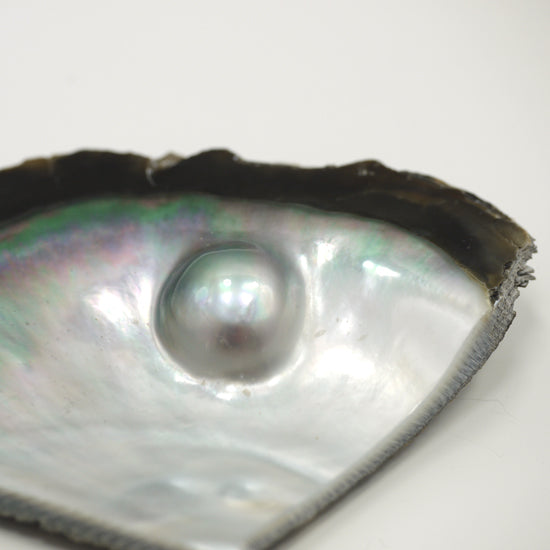
NATURAL AND CULTIVATED PEARLS: A MARINE TREASURE
FISHING, CULTURE, TRADE
Pearls, objects of timeless fascination, are the very essence of Belyness Bijoux. Our work around these jewels is deeply rooted in an admiration for their beauty, their rarity, and the history they carry.
At Belyness, we go beyond the purely aesthetic and commercial aspect of pearls. Our approach encompasses biological, geographical, economic, social and cultural dimensions, paying homage to the global heritage of pearls.
FORMATION AND HISTORY OF PEARLS
Since ancient times, in regions such as the Persian Gulf, the Gulf of Mannar or China, pearls have been revered as symbols of divinity and natural perfection. Ancient beliefs attributed mystical virtues to them, connecting man to nature and higher forces.
Without requiring any human intervention, natural pearls were seen as perfect treasures, created only by nature. This fascination with pearls has spanned the ages, carried by stories, myths and the tireless efforts of many divers and naturalists.
PEARLS AND PEARL OYSTERS: THE WORLD OF PEARLS
Pearl oysters, creators of these natural gems, have a rich history, marked by legends, superstitious and medicinal uses, as well as scientific theories that have led to modern pearl farming.
From traditional fishing techniques to innovative farming methods, every step of the process reflects human ingenuity in the face of the natural majesty of the oceans.
BIOGRAPHY OF PEARLS: A NATURAL AND SOCIAL HISTORY
Understanding pearls means exploring an intersection between natural and social sciences. The biogeographical approach allows us to understand the distribution of pearl oyster species and identify the fragilities of this resource.
PEARL FISHING AND CULTURE: AN ECONOMIC LEVER
Historically, pearl fishing and cultivation have generated jobs and income, although often marked by inequalities in the distribution of benefits. At Belyness, we aspire to promote a more equitable and sustainable economy in this activity.
These practices have also shaped local socio-economic structures, influencing trade and market development. From China and its freshwater pearls, to Japan with its famous Akoya pearls, to French Polynesia and its Tahitian pearls, each region has written a unique chapter in the history of pearl farming.
SUSTAINABILITY AND GOVERNMENT POLICIES
As the pearl fishery has expanded, governments have implemented regulations to preserve this natural resource. These efforts include laws on the exploitation of pearl beds, as well as initiatives to improve working conditions.
Scientific research, supported by ambitious policies, has enabled certain regions to become powers in the pearl industry. Examples of this include China, Japan and French Polynesia, which illustrate the benefits of proactive and sustainable management.
At Belyness Bijoux , we honor this fascinating history through each creation. Our jewelry embodies a deep connection with nature and a desire to preserve marine treasures for future generations.
